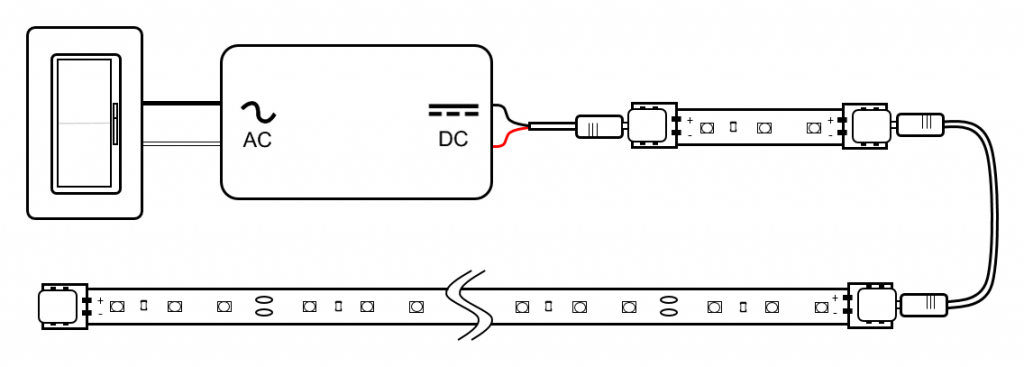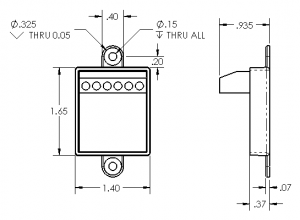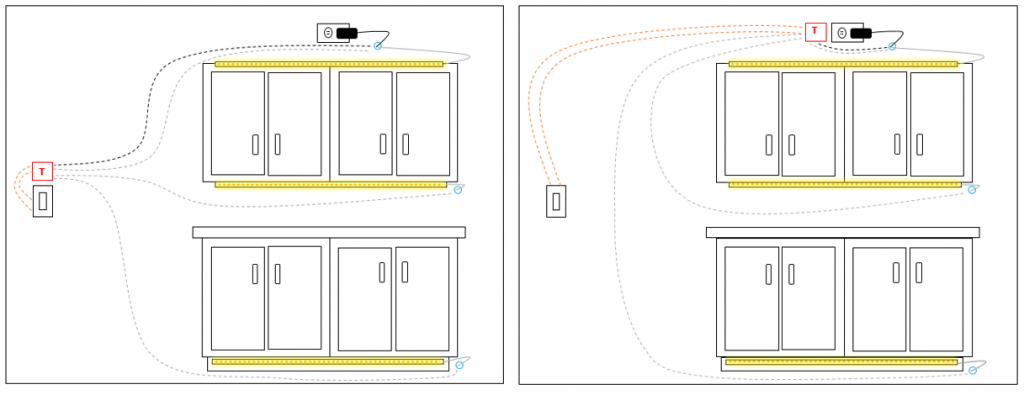 At Inspired LED, we pride ourselves on helping to drive the modern lighting industry forward by bringing new and exciting products to the market each year. From our patented solderless connectors, which helped to revolutionize the DIY LED lighting trend, to our unique self-powered Independence Dimmer, we are always excited by the opportunity to create something new. The latest and greatest innovation to emerge from our engineering department is the long awaited TRIAC Analyzer, a unique control device with the potential to transform the way we think about LED installation.
At Inspired LED, we pride ourselves on helping to drive the modern lighting industry forward by bringing new and exciting products to the market each year. From our patented solderless connectors, which helped to revolutionize the DIY LED lighting trend, to our unique self-powered Independence Dimmer, we are always excited by the opportunity to create something new. The latest and greatest innovation to emerge from our engineering department is the long awaited TRIAC Analyzer, a unique control device with the potential to transform the way we think about LED installation.
When designing an LED system, the first question is always one of power and control: how are your lights going to be powered, and how would you prefer to control them? Typically a low voltage LED system can be laid out in one of two ways. The simplest set-ups utilize a low voltage plug-in power supply combined with a compatible “in-line” switch, dimmer, or remote. The benefit to these types of systems is their ease of install, which rarely requires the services of an electrician.

The disadvantage of these plug & play systems is that these in-line switches and dimmers lack the perceived permanence and familiarity of a standard wall switch. For many lighting projects, this is not a problem. The LEDs look great, and in-line controls can often be mounted in a discrete location suitable for both convenience and functionality.
However, in certain circumstances, customers prefer to be able to be able to control their LEDs from a traditional wall switch. To accomplish this, an LED system must be powered using a hardwired dimmable transformer connected directly to the high voltage output through a compatible wall dimmer. This type of transformer is designed to convert the 120V AC running through your power lines down to a more LED friendly 12V or 24V DC (depending on your system requirements). While this type of system may be considered a bit more “finished” looking, and a bit more integrated into the home, it can also be quite a bit more expensive especially after adding in the cost of hiring a licensed electrician.

Given the constraints of these two types of LED set-ups, many contractors and electricians have attempted to find creative ways to combine the look of a hardwired system with the convenience of a plug-in power supply. One of the most common workarounds we encounter is the creation of a “dimmable wall outlet”, a set up where a standard dimmer switch is connected directly to a wall outlet. This solution, however, can lead to a whole range of issues, including violation of National Electrical Code, and therefore is not recommended.
First of all, a standard plug-in power supply is not designed to be dimmed from the high voltage side. So in this arrangement, the use of a wall dimmer will simply cause irregular power fluctuations which will shorten the life of the product dramatically, while inducing undesired behaviors such as blinking. Secondly, even if using a dimmable transformer, which can technically handle this type of dimming function, the “dimmable outlet” itself remains in direct violation of National Electrical Code Section 404.14E and 406.15. And for good reason. If a customer or future homeowner were to accidentally use this outlet for a standard appliance (like a blender, a vacuum, or a kitchen mixer) the dimming function would likely cause severe damage to the device, and may even lead to fire.
It was with these challenges in mind that Inspired LED’s lead engineer, Tanner Leland, set out to develop a safe, convenient, and cost-effective way to combine the simplicity of a plug-in LED system with the more desirable interface of a hardwired system. After some research, it was determined that the best way to accomplish this would be to create a device which allowed a plug-in power supply to connect directly to a ubiquitous TRIAC wall dimmer, eliminating the need for high voltage lines completely. He developed the idea for a specialized circuit board which could analyze the state of the wall dimmer, and adjust the power going from the power supply to the LEDs.

“The TRIAC Analyzer was essentially designed to look at the wall switch to determine whether it is on, off, or dimmed. Once the state of the switch is determined, the brightness of the LEDs is modified accordingly.” Tanner explained. “To ensure that the LED brightness accurately reflects the state of the dimmer, the TRIAC Analyzer actually learns the range of the attached dimmer, and scales the output to match.”

After several months of prototyping, testing, and development, the TRIAC Analyzer was born. And with it came a third option for LED system control, one which is more cost effective than a traditional hardwired system, but still allows customers to use a traditional wall dimmer.
This revolutionary device completely eliminates the need for expensive hardwired transformers, and while a few holes may still need to be drilled, it also drastically reduces the amount of labor required for installation. The graphics below illustrate two examples of how a TRIAC Analyzer might be installed in a standard kitchen.

The installation process combines elements of both the plug-in and hardwired LED systems. After the LED lights (12V or 24VDC) have been mounted in place, cables are run back to a central location near an outlet, or straight to the location of the wall-dimmer. There, the dimmer switch is completely removed from high voltage lines and wired directly to the TRIAC analyzer. The cables from the LED system, and from the low voltage plug-in power supply are connected to the TRIAC analyzer as well. When the power supply is plugged into a standard wall outlet, the 120V AC is converted down 12V or 24V DC, and the entire system is transformed into a low voltage chain of components, easily controlled from the TRIAC dimmer switch. You can learn more about how to install the TRIAC Analyzer by watching our instructional video here, or downloading our spec sheet.

The TRIAC Analyzer was awarded official patent number 9,288,851 on March 15th of this year. Prototypes were released to select contractors and distributors throughout the month of April, receiving a swell of positive feedback and anticipatory purchase orders.
“We are excited to bring this new product to market,” Tanner said, “and we’re confident that it will provide our customers with a convenient, reliable alternative for creating dimmable LED systems.”
The TRIAC Analyzer is currently available for purchase over the phone at (480) 941-4286, and on the Inspired LED website here.
For more information about the TRIAC Analyzer and other innovative products at Inspired LED, contact us at orders@inspiredled.com and be sure to keep an eye on our blog for the latest product development news!




